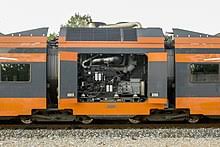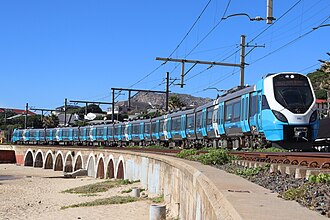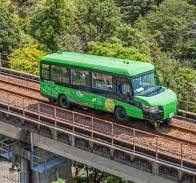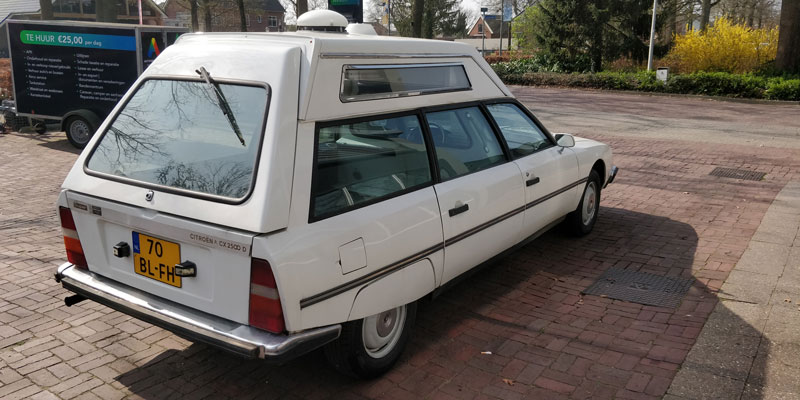CHOO-TJOE RETURNS
Blast from the Past
Recently, in a local messaging group, a thread about ambulance services began. Hoekwil residents, concerned about the ceaseless traffic blockages on the N2, especially at Kaaimans River bridge, were enquiring about a “back road”. Twice, while I lived there, I used the ambulance service, once in daylight, and once in the small hours. The night trip naturally went quickly. Surprisingly, the daytime ambulance still arrived well within the hour from George, and though it did crawl a lot on return to George, most people edged out of the way to let the ambulance through. This is a generally civilised part of the world.
Rail Revival
Those trips got me thinking about the old Outeniqua Choo-Tjoe. Word is that a tender for its return was successful, and we’re abuzz about that legendary train making a comeback.
With the choked N2, this section of rail between George and Knysna, apart from the return of cutesy steam (think Rovos Rail day trips as in the past), and the tourist cash that comes with that, getting traffic off the N2 and onto rail will help.
I can think of a few modes:
- Railcars
- Multiple Units
- Road-Rail
- Traxi
Of these, the last is my own idea, written about elsewhere. Railcars
Railcars
Railcars were around nearly a century ago: on the George - Knysna section: but I think Road-Rail is a better fit today.
DMU & BMU
Diesel Multiple Units have been around for 90 years in England. Japan has both these, and Battery Multiple Units in service on their Cape Gauge lines. DMUs have either a single power car placed in the centre


Road-Rail Bus
We could modify local ambulances for both road and rail. Transnet Freight Rail maintenance vehicles already are equipped for this, and other countries have it. I think road-rail ambulances on the George-Knysna section are a good fit, to begin with. There is a road-rail bus service in Japan on our Cape Gauge 1067mm (3ft 6 in).
Road-Rail Ambulance
It would address the problem with the crowded N2, and provide a smoother ride than existing road surfaces do. Our ambulances are basically kombi teksies refitted as ambulances. From many personal experiences, including one on corrugated gravel roads for 35 crashing and bouncing kilometres, I can vouch that there is one way in which these vehicles are seriously awful: they are boneshakers. No matter how reliable the other 12 and 16 seaters on our roads are (and they really are), they ride worse than ox-wagons. Yes, I have been on one of those too, on a farm ride. Their big wheels and slow gait are more comfortable than the industrial-quality rides perpetrated by teksiewa makers.
One would think this is an opportunity for SA vehicle makers, but we live in “we have always done it this way” land. I wish somebody would come up with something like the last ever comfortable ambulance:

People commonly view that kind of suspension as unreliable and complex, but I knew a Citroen specialist who reconditioned the spheres at very reasonable prices, not only for Citroen, but for local Rolls-Royce dealers too. Hydraulics could be fussy back then, but we don’t hear of Rolls-Royces and Range-Rovers bursting pipes on their systems, and all Land Rover Defenders have it as standard. Can we assume they are now reliable?
Traxi

Put simply, the idea is to create a train set made of self-propelled flatbed wagons, as is done on Cape Gauge (the same as our branch lines) in Japan. The dialgramme represents three taxis slotted onto a flat bed rail wagon. The taxis could be similar to Amazon's Zoosk, but with all-wheel steering, like the Hyundai Ioniq 5, enabling them to park crabwise on flatbed wagons. This way, we could meld both taxi and branch line rail into something useful, instead of letting rail rust and decay. The line from Worcester to Mossel Bay is well suited to Traxi style operation. A special article will cover this possibilty.
Choo-Tjoe and the regulator
The first hurdle that the Knysna to George section will face is approval from the regulator. I have nothing good to say about this entity, except that, with chainsaw cost- and DOGE-cuts, this sheltered employment for hypersomniacs won’t be around long. Reading their report could put anyone to sleep. To quote:
… when adjusted for a million train km, incidents in 2022/23 rose by 51% from 2018/19 and 136% from 2021/22. This trend is alarming given that over 5 years PRASA produced 88% fewer train km since the 2018/19 reporting period and 74% fewer train km on a year-on-year when comparing the 2021/22 reporting period km to the 2022/23 reporting period recorded km.
There you go then. It is the regulator’s job to prevent accidents, not just report on them. Trains operations have shrunk to a quarter in five years, yet ‘collisions’ have risen as much as 51%. Clearly, instead of holding junkets and award ceremonies, they should do something more than pretty PDF presentations, get their butts out there and stop the incidents. Rob Hersov, who dearly wants the cabinet portfolio of the Department Of General Efficiency, you know what to do. Bring your own chainsaw. I don’t expect anyone to want to read their report: it is more than a hundred pages of schmooze and numbers, but here’s a tip: try to find an actual derailment, or a train-on- train head-on or rear-end collision. Good luck. The best I can say is that I enjoy their definitions of ‘collisions’. They remind me of Inspector Clouseau:
“I ‘ave un bump eun ma feurhead”
Signalling
George to Knysna does not appear to have either semaphore nor CTC signalling, so I will assume they use old school permissions.
There is a staggering amount of IT talent in SA waiting to be put to use doing innovative work. Ride-hailing apps show every car in a locality, as they stop and go. Using nothing more than smartphones on the same GPS principle, a quiet branch line like this, with only a few vehicles daily at first, will be adequately served. I have grown to trust Garden Route ambulance drivers: they are not the sort of people that are going to play ‘boy racer’ with ambulances on a railway track, so, it we were to restart this branch line quietly, using the section for dual rail-road mode ambulance only at first, we could use smartphones in the same way that ride-hailers do.
What, for an example, does the recently controversial Wanatu use? If they are up to snuff, their app should use Afrikaans, proving that local IT is lekker.